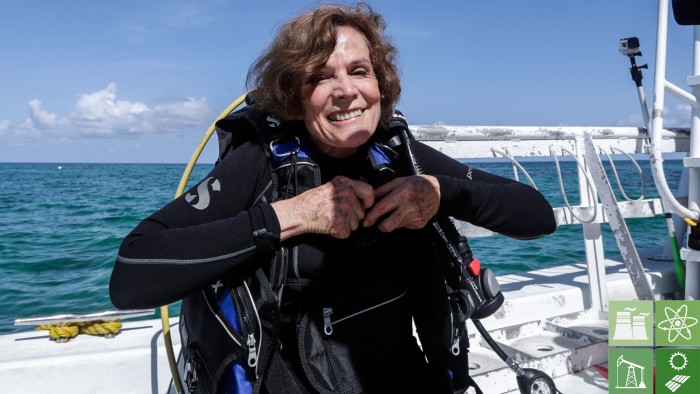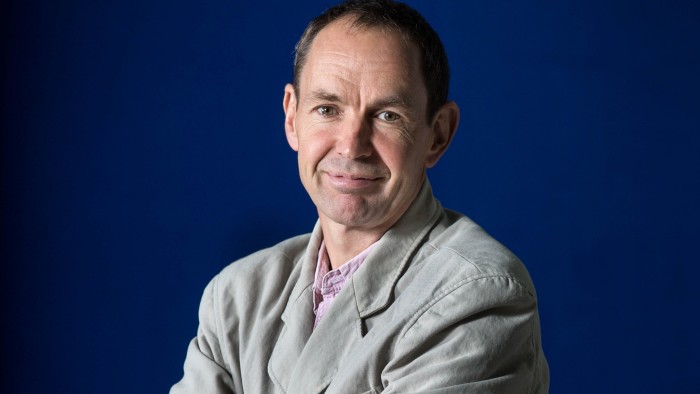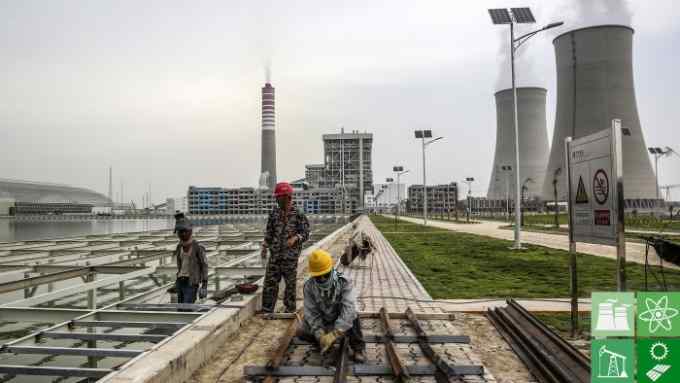Energy use and emissions: we can all make a difference

Simply sign up to the Climate change myFT Digest -- delivered directly to your inbox.
When Sylvia Earle was a child, the Gulf of Mexico was her backyard. Her parents encouraged her love of the outdoors, and always taught her to leave a place better than she found it.
Three decades later, she was the first person to walk solo on the ocean floor at a depth of more than a quarter of a mile, and later the first chief scientist of the US National Oceanic and Atmospheric Administration. An oceanographer, she has become one of the world’s most vocal ocean advocates, and a leading figure in the environmental movement.
Not everyone can be a full-time environmentalist or a world-famous oceanographer, however. For individuals, the question of what an ordinary person can do to help the environment has become increasingly difficult. Many people would like to leave the world a better place than they find it, but at a time of heatwaves, wildfires, and rising carbon emissions, that task seems very daunting.
Ms Earle sees room for hope, though. “The most important thing is knowing,” she says. “We all have the opportunity armed with knowledge to turn things around.”
She points to the recent focus on plastics, and the growing awareness of how small plastic pieces contribute to the build-up of toxins in the ocean. “Now that we know we have a problem, we have a fighting chance of solving it.”
The reason the anti-plastics movement has been so popular is because it presents something concrete, an aspect of daily life where individual action can have an immediate and satisfying result.
That is not the case for many other aspects of environmental protection, particularly climate change, where it can be perplexing to decide what individual actions will make the most difference. Even while climate science has progressed, and even after more than 170 countries signed the Paris climate agreement to limit global warming, carbon emissions still increased last year. For individuals looking to cut their own carbon emissions, that can seem like a dispiriting fact.
Mike Berners-Lee, author of How Bad Are Bananas: The Carbon Footprint of Everything, points out in his book that measuring our personal carbon footprints is almost impossibly complex, but says individual action can still make a difference.
“None of us are saints, we all have trade-offs and compromises to deal with, and it’s about picking your battles,” he tells the Financial Times. “Everybody has a different carbon footprint, so for everyone it is a question of what you should pick. And it’s a question of understanding what you are attached to as well.”
For people who travel a lot, their flights are often a big source of emissions — as well as the hardest to mitigate. Buying carbon offsets or flying less can help for now but it will probably be decades before long-distance air travel is possible using zero-carbon fuels.

The food we eat and the things we buy are also a big source of emissions. Cutting down on red meat and buying less are two of the most direct ways to reduce individual carbon footprints. Prof Berners-Lee’s most recent research finds that if food consumption trends continue on their current trajectory, the earth will need to produce 119 per cent more food by 2050.
“It doesn’t have to be done overnight, none of us have to go vegetarian or vegan . . . But we do need to get on a different trajectory over the next decades,” adds the academic, who is brother of inventor of the world wide web, Sir Tim Berners-Lee.
Home heating and car travel are other areas where individuals can have a direct impact. Heating and cooling can be made efficient with better insulation and design. Avoiding car travel, or opting for a ride-share or electric vehicle where possible, can also cut emissions.
“Part of it is what we do in our own carbon footprint, and part of it is what are the ripple effects that go out from what we do,” Prof Berners-Lee says. “How you exert your systemic influence in all those other ways — what do you do at work, how you vote, etc.”
Even the most ambitious individual carbon-cutting efforts can go only so far, because of the energy systems already in place in the world.
“What we really need to think about is how can we create the conditions where, as a species, as a planet, as a global society, we can manage those emissions downward,” he says. “There is no escaping the need for some sort of global co-ordinated response.”
Explore the rest of our stories on Citizens and Consumers
- Indonesia sticks with coal to meet energy demand
- Mexico City seeks fix for transport pollution
- Pakistan pivots to coal to close energy gap
- China pollution obsession spawns global industry
- Environmentalists split on clean energy transition
- Carbon pricing taxes US politicians and theorists
- FT readers say carbon pricing key to energy debate

Comments